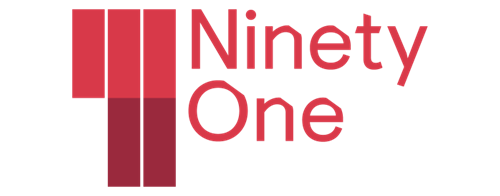Herman van Papendorp, Head of Asset Allocation at Momentum Investments
It would be an understatement to highlight that United States (US) President Trump’s foreign and trade policy actions have continually ruffled the feathers of allies and adversaries alike since his inauguration and have dramatically changed the diplomatic landscape.
True to form, Trump’s aggressive and wide-ranging tariff increase announcements on 2 April 2025 negatively surprised market expectations, leading to sharp equity and credit market sell-offs and a rally in the perceived global safe-haven asset, US bonds. Not only did equity markets decline materially, but volatility also soared, with the US equity volatility index (VIX) reaching levels last seen in the COVID-19 pandemic.
The initial market assessment of the aggregated proposed Trump campaign policy package of higher tariffs, an immigration clampdown, deregulation and tax cuts was that it would be reflationary (higher growth and inflation) for the US economy over time. However, the market focus has now shifted to the immediate growth-negative implication of significant tariff rises which increases the likelihood of either a recession or stagflation (much weaker growth and higher inflation), with the medium-term growth-friendly policy elements of deregulation and possible tax relief demoted to the sidelines.
Although there is always the possibility that some of the tariff increases could be rolled back slightly after negotiation, the order of magnitude by which US tariffs have been increased (from a previous effective overall import tariff of below 3% to a new estimated level above 20%) doesn’t bode well for either global growth or inflation. As such, the negative growth impact on corporate profits needs to be factored in by equity markets, as does the adverse inflation impact and potential fiscal risk attached to the Trump policy framework by bond markets. The prospect of higher inflation also complicates future US monetary support for the US economy and global markets despite the worsening growth outlook.
Despite the recent equity market declines, US valuations are still trading above historical averages, particularly when factoring in poorer profit prospects, hence constraining future returns. Furthermore, with foreign investors owning 33% of US Treasuries, 29% of US corporate bonds, 23% of US listed equities and 35% of non-listed US businesses, any potential future retributions from countries against the US that cause a reduction in foreign ownership could weigh on US asset prices. In contrast, better equity valuations outside the US should provide more investor protection once sentiment stabilises.
For South African (SA) equities, even if previous profit growth assumptions are cut by an aggressive 25% to account for a potential decline in global and local economic growth forecasts, current valuations are around one standard deviation below historical averages, providing a margin of safety protection for future returns. In addition, SA equities continue to trade around one standard deviation historical lows against emerging market (EM) equities on a relative forward P/E basis.
Similarly, SA nominal bonds, inflation-linked bonds (ILBs) and cash provide attractive real returns across the board that should support future returns in diversified portfolios over time. SA vanilla government bonds still provide some of the highest backward-looking real yields in the world, only exceeded regularly by Brazil within the EM peer group. We think ILBs should receive fundamental support from an anticipated rising inflation trend from the likely low of 2.8% in October 2024 until late 2025.
From a portfolio construction perspective, the inclusion of gold as an asset class adds to portfolio diversification due to its limited correlation with other asset classes, while its safe-haven characteristics during turbulent geopolitical periods also mitigate portfolio risk.
Ultimately, the best protection against market turmoil for investors is to have diversified exposure to a wide variety of asset classes and not be derailed from long-term investment goals by events that impact markets in the interim.
ENDS

























































































